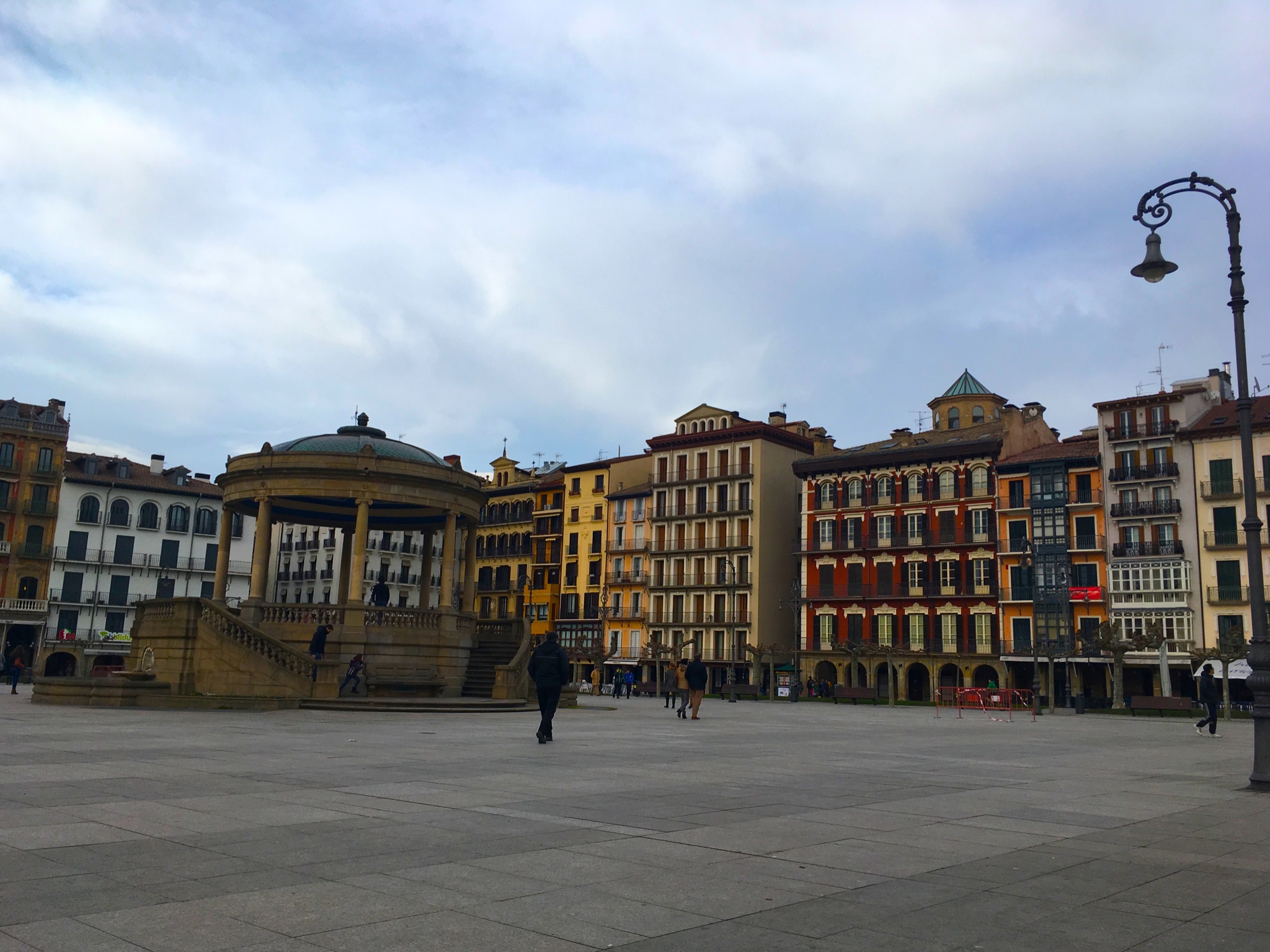The capital of Navarre was made famous by Hemingway’s novel ‘The Sun Also Rises’ and is now known throughout the world as the location of the annual bull run at the San Fermín Festival. Not only do tourists flock to the city for the July fiesta, but pilgrims make their way through the town on their journey along the Camino de Santiago (or Way of St. James) to Santiago de Compostela. However, there’s so much more to see and do in Pamplona and, after living there for a year, here’s our top 5 from an authentic perspective!
1. Bull Ring.
The end point of the Encierro, the bull ring is an excellent place to visit to really understand the local culture and the historic traditions of bull fighting. With an audio guide, you are taken round the arena and the supporting buildings, including the corrals. A highlight is the Bullfighters’ chapel, where you can really imagine what it must feel like for the bullfighters in the minutes before they enter the ring!

2. Paseo
What is more Spanish than having an evening stroll? And what better place to do it than Pamplona’s old town? We recommend starting in the Plaza del Castillo (the main square and former bull ring). This is where most people meet if they’re heading out for the evening and in the summer it feels like the whole town’s come out to be together!

The Casa Consistorial (Town Hall) is also a must on your wander round of the city. It was first built in 1423 by order of King Carlos III in an attempt to unite the people of the three different districts of Pamplona, although its current appearance is much more recent. Its façade is a mix of baroque and neoclassical. If you’re after the best picture of the Town Hall, nightfall is an excellent time to go – the façade is illuminated and looks incredible!

The Murallas or city walls are an excellent way of getting to know more about Pamplona’s history. Starting in the Taconera Park, you can admire the Portal de San Nicolás (one of the city’s former gated entrances) and the menagerie of different animals! From the Taconera, you can walk all around the existing wall, towards the Portal de Francia, the pilgrims’ entrance to the city on the way to Santiago de Compostela. The Baluarte del Redín, which follows, is the oldest Bastion in the walls and has a wonderful old bar, the Caballo Blanco (White Horse), which is open mostly in the summer. From there, you can walk around the back of the Cathedral to the San Bartolomé Fort, which houses a museum about the walls.

The Ciudadela (or Citadel) is also a lovely place to wander around at any time of day. Usually, there are some temporary exhibitions in the buildings and quite often there is live music. It was used for military purposes until 1964 when it was turned into a park.
3. Museums
The San Bartolomé Fort houses a museum about the city’s fortifications and gives a great insight into Pamplona’s history, particularly during the 18th and 19th Centuries.

The Museum of Navarre is a great place to start to find out more about the region’s history. Free to get into, it contains artwork and artefacts dating from prehistory to the 20th Century. Highlights include a huge Roman mosaic and a portrait by famous Spanish painter, Francisco Goya.
A little further out of town is the Museum of the University of Navarre, which contains lots of artwork, including one of Picasso’s famous Mosqueteros. A short bus journey or a 20 minute walk from the city centres, it’s definitely worth paying a visit to the university’s beautiful campus!

4. Cathedral
The Catedral de Santa María la Real is one of the most significant buildings in the city. Although its neoclassical façade was constructed in the 17th Century, its cloister is Gothic and dates from the 13th Century. As well as exploring the church, with its magnificent collection of art and sculptures (including the tombs of King Carlos III and Eleanor of Castille), you can also visit the refectory, kitchen and cloister. At 11 am, there is also a tour of one of the bell towers, where there is an excellent exhibition and stunning views over Pamplona.

5. Juevintxo
Perhaps the highlight of the week for many locals, Juevintxo is an initiative to encourage people to go out on a Thursday evening to the old town. Many bars offer a special deal of pintxo (a small bite to eat) and a drink (either a glass of wine or beer) for an incredibly cheap price! The best deal is around 2€ but anything up to 3€ is reasonable. The best locations for Juevintxo is the Calle de la Estafeta and the Calle San Nicolás. We recommend trying as many different pintxos as you can but absolute musts include tortilla de patatas (Spanish omelette) and txistorra (a spicy sausage). Lots of bars have their own specialities and it’s definitely worth spending some time looking down the bar to see what there is before ordering!

These are only a few selections of things to do in Pamplona; the city and region offers so much more! To see more of our photos of Navarre, and other destinations, follow us on Instagram and subscribe to our blog!

Pamplona sounds really interesting!
LikeLiked by 1 person
Thank you for the post, was very interesting, also beautiful photos:)
LikeLiked by 1 person
Wow! Great photos.
LikeLiked by 1 person
Nice Post! I am from Spain 🇪🇸 and I did not visit Pamplona yet!
LikeLike
Surprisingly, I have never heard of Pamplona, so it was really interesting to learn a bit about it! It looks like a lovely city.
LikeLike
It all sounds so wonderful! I would love to check it out soon.
LikeLike